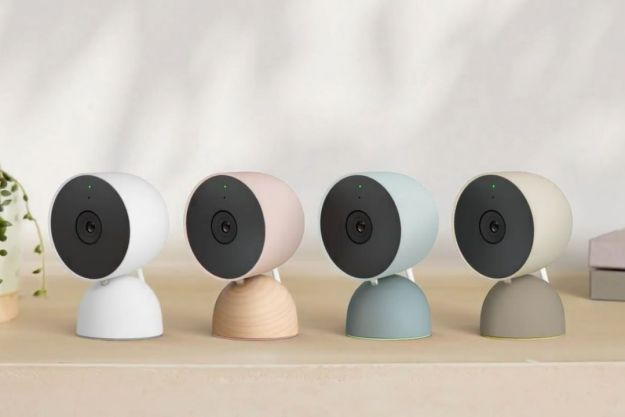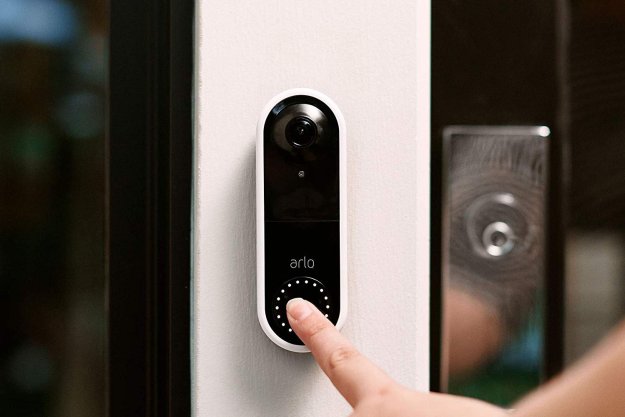The Consumer Electronics Show in Las Vegas was a tough show this year, with two large convention centers to cover, plus all of the manufacturers? suites in hotels. As always, it was a tiring but exciting show. As I noted in my most recent blog (?Post Partum CES?), the two major themes of the show were 1080p displays in all screen technologies and the looming next-generation optical disk format war. Will this format war play out like Red versus Blue states, or will it be a different scenario? (In case you didn?t know, HD DVD?s packaging is red, and Blu-ray?s is blue. How quaint.)
Before I discuss each theme, we need to get the ?wow? product out of the way. Every year, people ask about the ?wow? product. Sad to say, that there were no truly ?wow? products this year. That?s not to say that there weren?t gadgets like Sony?s new eBook-type product called the Sony Reader, which is the size of a paperback book. Or Intel?s newly proposed Viiv system, found in ED Digital?s new Digitrex TV with server product, to help bring the television and PC closer together. While these and other products were interesting, they did not have the ?wow? factor like some products have had in past years.
Sony Reader
In terms of displays, I saw many splendid examples all over CES. While most were 1080p models, others offered innovative designs. First of all, Texas Instruments (TI) privately showed me their new flat DLP design, which offers an entirely new light engine design in a greatly reduced cabinet depth so that it can easily compete with other flat-panel displays. TI also showed a Samsung prototype DLP set that features LED lighting instead of the current high-powered lamp, and it doesn?t need a color wheel! It was truly amazing! While slightly less bright than current models, I expect that it will be as bright or brighter by the time it reaches the market. HP also showed a prototype of an LED light-sourced DLP for delivery later this year. Amazing! Hopefully, someone will combine ?flat? and LED light-sourced DLP into one cabinet for an exceptional Micro-Display. Sony also showed the press a reduced depth 55-in. 1080p SXRD, which was under 12-in. deep. Cool! Contrary to many manufacturers? belief by, TI and Sony still firmly believe in Micro-Displays. As a side note, some manufacturers are starting to leave out CableCARD on their HDTV models. Once two-way CableCARDs are approved, they will again start including them on their higher-end sets.
Turning to plasma displays, all of the major plasma manufacturers showed 1080p models. Panasonic had the largest, with a 103-in. model outdoing Samsung by an inch, to their great dismay. These 100-in.+ displays are showpieces only. Mainstream 1080p plasmas will be in the 50-in. and 55-in. categories this year. Companies such as LG, Panasonic, Pioneer, and Hitachi showed models that offered exceptional clarity for a plasma display. Hitachi showed the largest 1080p plasma model in a 55-in. size, and offering three HDMI inputs for delivery later this year. I can?t wait to review it! In other plasma news, prices continue to fall dramatically. V, Inc.?s Vizio line will be selling 720p tunerless plasma monitor models for $2,499 (50-in.) and $2,999 (55-in.) during the first half of 2006. Surprisingly, the image quality looks quite good for 720p, and certainly a terrific value for the consumer. V, Inc. originally supplied Gateway several years ago when they broke the $3,000 price barrier.
Vizio P42
In terms of LCD displays, most manufacturers now are carrying models up to 47-in., with 42-in. and 47-in. now becoming the new popular larger screen sizes. These larger screen sizes are all 1080p models. Of course, there are companies like LG and Sharp who also offer 55-in. and 65-in. HDTV models, but they are somewhat pricey. Speaking of prices, they continue to fall on all flat-panel displays. There could easily be price parity this year on some screen sizes. We?ll just have to wait and see.
A word about SED: Both Toshiba and Canon publicly showed SED for the first time. When launched this coming fall (September-November), it will be a 1080p 55-in. model. Pricing is unavailable, but I expect to get more details in May at Toshiba?s line show. What I can say is the image quality is truly exceptional! As one TV engineer confided, ?It made the hairs on my neck stand on end, the picture was so stunning!? While some journalists think that the window is closing for SED (if it doesn?t launch), others feel that the picture quality is so good that people will certainly buy it. We will just have to wait and see.
Clearly, CES proved to be the initial battleground for Blu-ray versus HD DVD. The Blu-ray camp was well represented, with all of its members showing off their player-only models with exceptional industrial design. It has to be noted here that the initial offerings will be player-only modes and not recorders, as originally announced last year. Virtually the entire Blu-ray camp will start shipping players in the second quarter of 2006 (around June-August timeframe). Samsung will be the first company to sell a Blu-ray player in the U.S. starting in April, and to be priced at $1,000. It is expected that the majority of BD players will be in the $1,000 range. The exception is Pioneer Elite, who will have a reference player priced at $1,800. I expect that they will offer a less expensive model in their regular Pioneer line later in the year. To sum up, stand-alone Blu-ray players will cost between $1,000 and $1,800.
Pioneer Elite BDP-HD1
However, the monkey wrench in this scenario is Sony?s PlayStation3 (PS3). I overhead several Sony executives talking about a $600 price point for a machine that plays next-generation games and BD movies outputting 1080p signals. PS3 will be launched?most likely?in the May timeframe to coincide with E3, which will be held in LA. If true, a $600 PS3 will make an especially compelling purchase, and may force other members of the BD consortium to rethink their price points. It also begs the question as to what Sony will charge for its BD player-only version, which is scheduled to come out in the June/July timeframe. Interesting. For gamers, PS3 makes for a very compelling gaming solution, as the BD drive is internalized instead of being outboarded (such as is being done by Microsoft with its xBox360 HD DVD drive). During the April timeframe, there will be movie titles from Sony Pictures, MGM, Paramount, and Buena Vista (Disney), among others.
On the other hand, HD DVD will launch in March 2006 with $499 players from Toshiba and RCA (these are OEMed from Toshiba) with approximately 20 titles from Warner Brothers, Universal and Paramount, to start. The movie studios who support HD DVD have noted that they will have 200 titles out by Christmas 2006, including the Harry Potter movies and Mission Impossible 3. And, it?s quite possible that its price could drop to $399 by the Christmas selling season, making it a bargain. Presumably, Microsoft, who is now a staunch backer of HD DVD, is helping Toshiba offset its cost. Surprisingly, at the show, Sanyo?an original backer?will not be selling a player at this time. Hmm. And, Microsoft will be offering external HD DVD drives that can be attached to their xBox360 in a less than elegant solution.
Toshiba HD-DVD Player
With the backing of Microsoft, it certainly makes this looming optical disk format war a horse race. HD DVD will be out of the gate quickly in March with players at a very lucrative price point and some software (with more on the way). While Samsung launches their Blu-ray player in April, will BD movies be there yet? We aren?t sure. And, will Samsung be overshadowed by PS3 as it arrives in May at a price point around $600? Will PS3 be compelling enough for non-gamers to buy this futuristic machine in lieu of a stand-alone player by other members of the consortium? Or will consumers see the value in a next-generation optical disk player for under $499? Clearly, the next several months will be quite interesting for HD DVD versus Blu-ray. It?s unclear what the early adopter will do. And history could repeat itself. While apparently Blu-ray may be the superior format in terms of data storage capability and outputting 1080p versus 1080i, it could lose the race, just as Betamax did years ago to VHS. Or, with the backing of 85 percent of the consumer electronics industry along with Dell, Blu-ray could easily squash HD DVD. But, right now, it?s anyone?s horse race.
These are exciting times for CE manufacturers, with projections of more than 14.0 million DTVs to be sold in 2006, the bulk of them (12.0m) being flat-panel displays. Can the factories in Taiwan, China, and Japan pump out these displays fast enough? And, just when we thought that we had won the war for the living room, Microsoft and Intel are making another assault with Viiv and the Vista operating system along with xBox360. Apparently, Microsoft wants to see Sony lose the optical disk format war so badly that it is unofficially underwriting the HD DVD launch. Of course, everyone denies it, but we know that Sony is Microsoft?s avowed enemy. And, so it goes.
Click here for more CES coverage including video highlights
Editors' Recommendations
- How to save Ring Doorbell video without a subscription
- Get up to $1,200 off Samsung’s new AI-powered smart refrigerators
- Go smart or go home: Amazon’s Echo Show 8 smart display is $50 off
- Amazon Big Spring Sale: Get up to 43% off Echo smart speakers
- Home Depot’s Hubspace is a great way to start building your smart home







